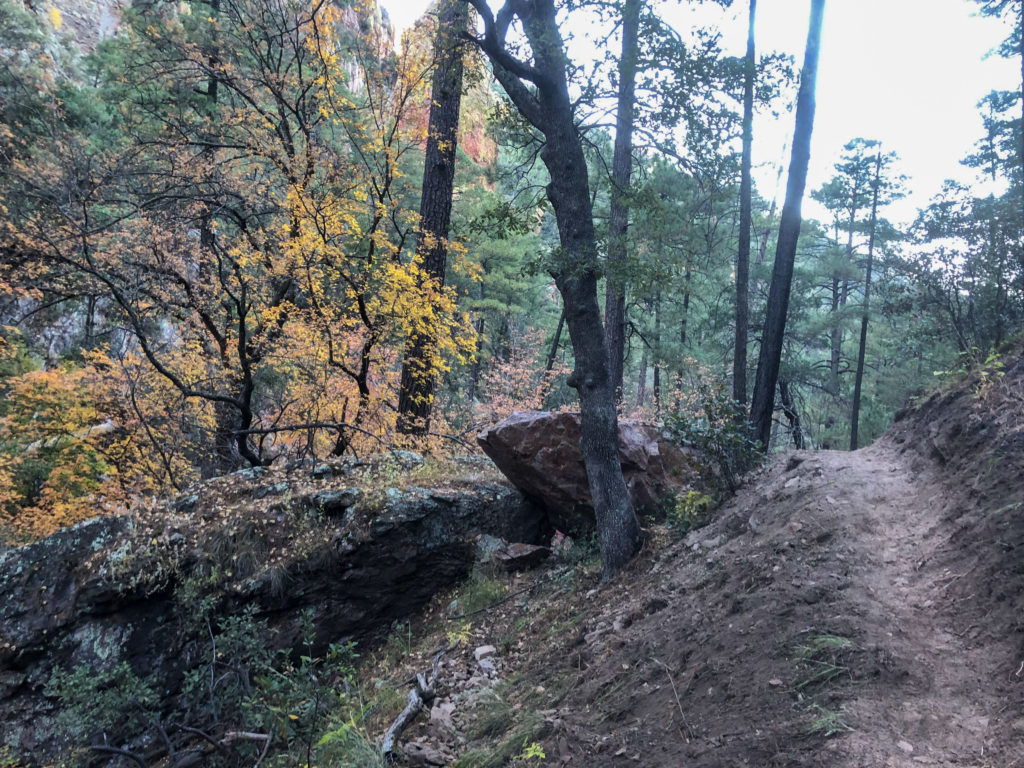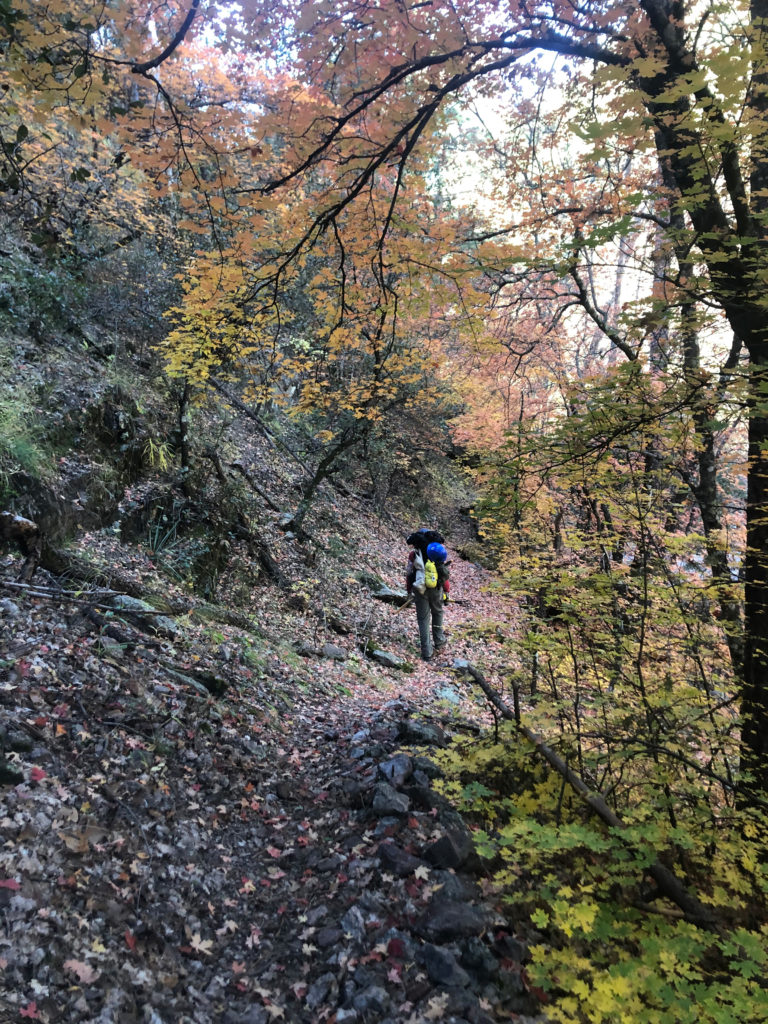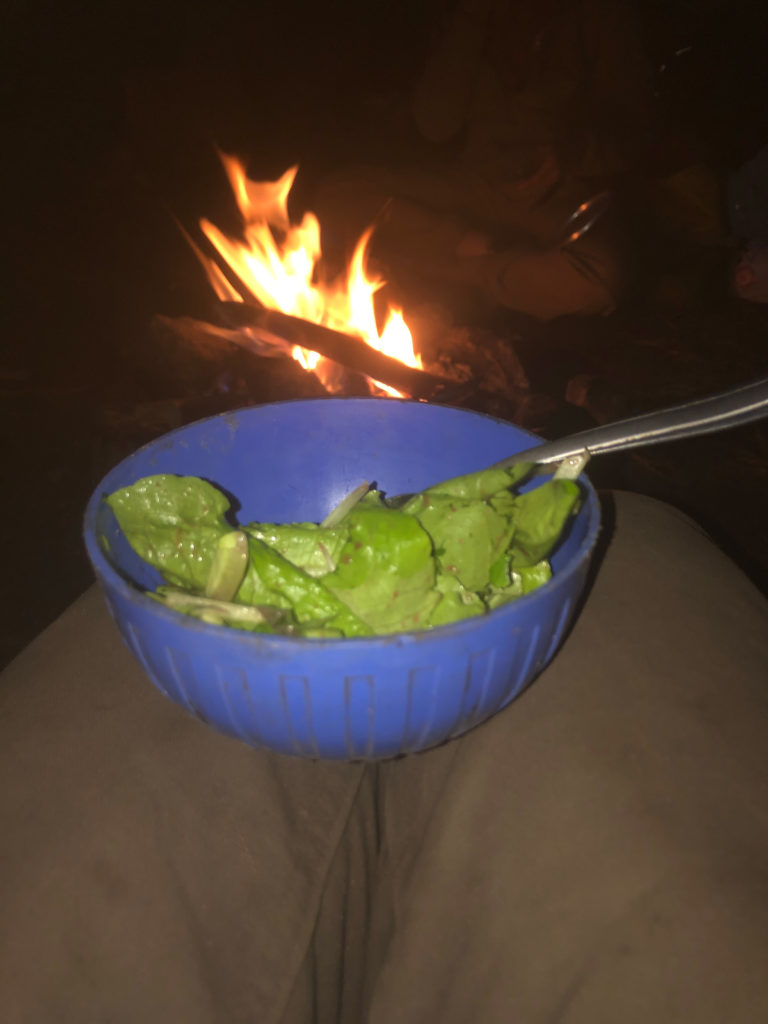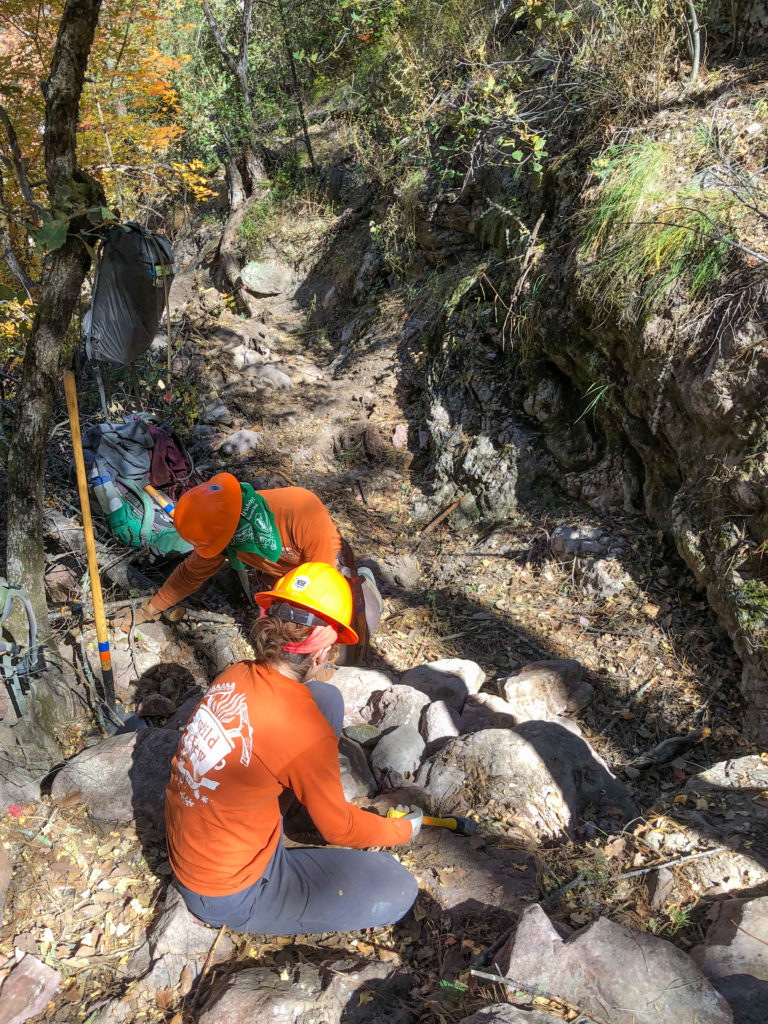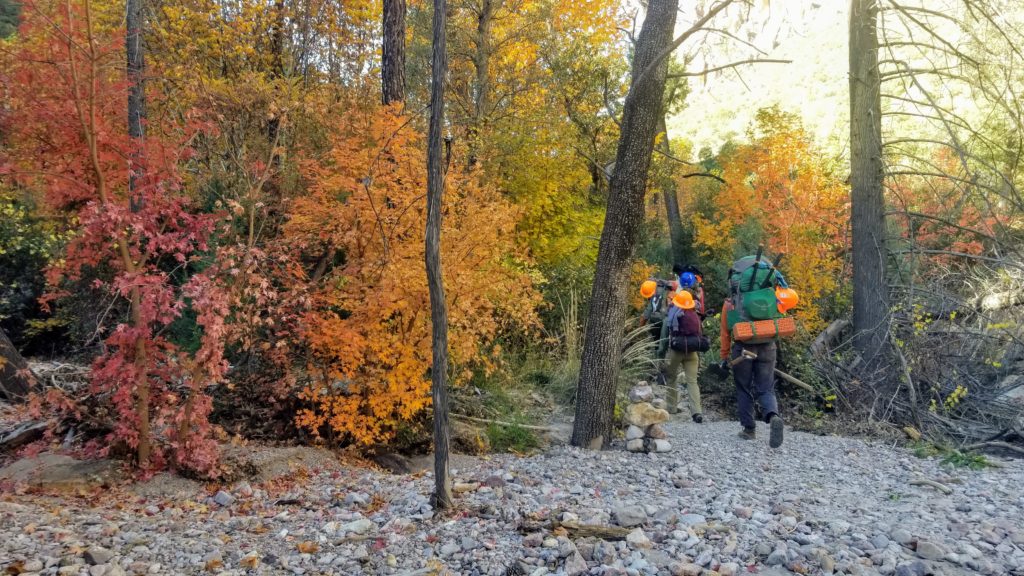
Written by Kyle Arsenault, Wild Stew Field Crew Member.
Our crew started this hitch with another member and wonderful addition, Lexi Miller, who came to us from the trail crew of Rocky Mountain National Park. After a spectacular sunrise in Portal, AZ, the crew headed back out into the Chiricahua Wilderness to continue the progress made in early October, when we began work on a restoration project on the South Fork Trail in Cave Creek Canyon. Home to an incredible diversity of avian wildlife, this is a destination hike for bird-lovers the world over. It’s no wonder, given the grandeur of the place. From the greens of the massive pines and the tiny ground cover, to the vibrant yellows, rich oranges, and deep reds of the Sycamore, oaks, and maples. Sometimes you can nearly see all colors on one tree. If that wasn’t enough, we were also treated to brilliant pink petals of late-fall flowers.
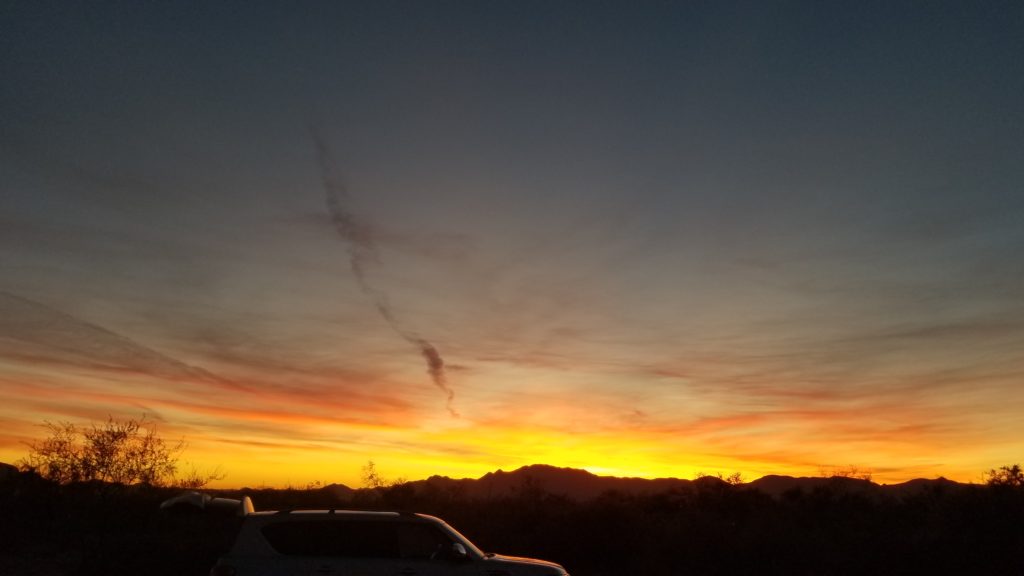
Heavily damaged by major flooding, tree falls and rock slides, the upper South Fork Trail was in dire need of restoration. We began by setting up camp at what we’d come to call “Happy Camp”, our home for the next 8 days. We then hiked back downstream from our campsite to the aptly named Maple Camp, where we began to chisel away at the mountain, revealing short stretches of new trail where there was none before. We were surrounded by a grove of maple trees that was giving an excellent performance, simultaneously littering the ground with rich red leaves while proudly boasting the same on their branches.
As we worked, we moved upstream deeper into the canyon. Some stretches required only an occasional brushing, while others required us to work on a steep slope of a talus field, pulling rocks from the earth by hand, one by one. It seems crazy, but this was the highlight of the work for me. It was immensely fun to throw what has to have been thousands of rocks downhill, revealing a rich soil tread below. Given the steep slope of the rock field, the fresh trail collapsed on us a few times, but we all just laughed it off and got to throw more rocks.
If it wasn’t thousands of tiny rocks, it was one or two massive ones. The terrain can dictate where the trail will go, and sometimes it wants you to earn it by placing large boulders directly in your way. Sometimes it’s dead center of a trail on the side of a river crossing, other times it’s sticking out of the hillside, forcing you to walk on the edge above a steep drop-off to the river below. With much planning, many holder rocks, extensive teamwork, and a hefty bit of leverage from a rock bar, we were able to move several large boulders, clearing the path forward. Occasionally, we were fortunate enough to exploit a crack, either with prying from a rock bar or the brute force of a sledge hammer, turning big rocks into smaller, lighter ones.
The other major obstacle we faced was the root clusters of oak trees, which form clusters of large roots that all need to be methodically excavated with myriad tools. One small cluster can require half a dozen saw cuts, lots of snipping with loppers and take hours to remove, leaving a large crater needing backfill!
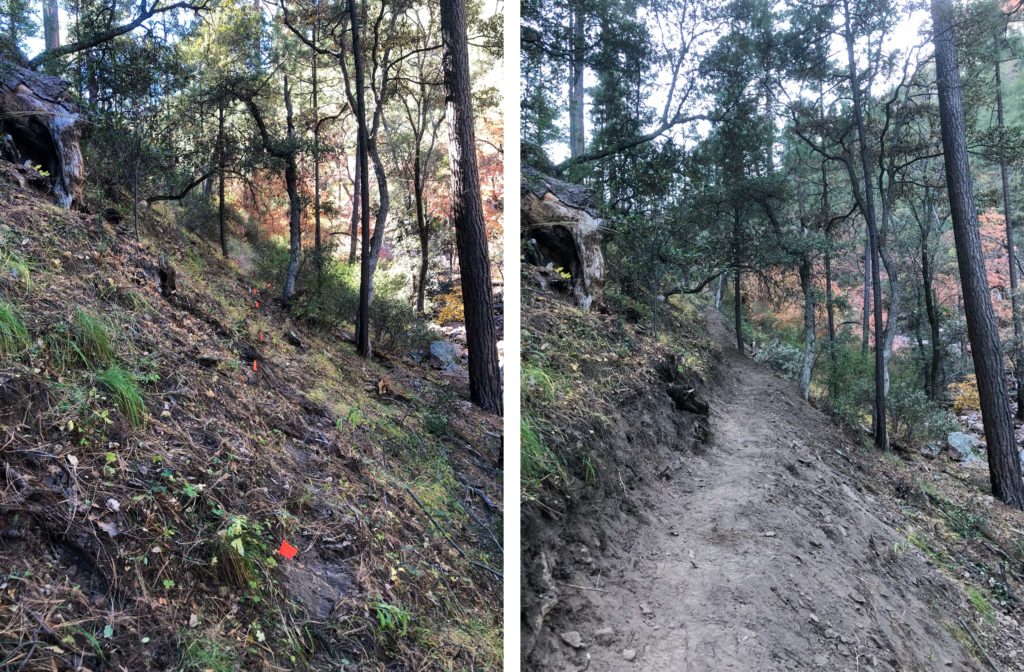
About halfway through the hitch, Dirk Sigler and John Yerger met us just as we broke for lunch, bringing in an axe to aid in our fight against the root clusters. They stayed for a while after to put some work in themselves before having to hike back out that same afternoon. Dirk even surprised us with a generous serving of home-grown lettuce and homemade elderberry vinaigrette, a most welcome treat after several nights in the backcountry eating packaged or dehydrated foods. It’s exceedingly rare to have fresh greens and dressing in the backcountry, and it was better than any of us could have imagined.
We all took great comfort at the end of the workday walking back to camp on a fresh trail, with each day giving us more satisfaction from seeing new trail appear before us. As a reward for a hard day’s work, and to fight off the biting cold of a November canyon at 6500 feet, we spent the evening sharing food and stories around a campfire, and even “made” a new friend. On the last day, we packed up camp and headed out. As we got closer to the popular stretch of the canyon, we saw many hikers, most of whom were bursting with gratitude and beaming with delight upon seeing our trail crew, knowing their special place is being tended to.
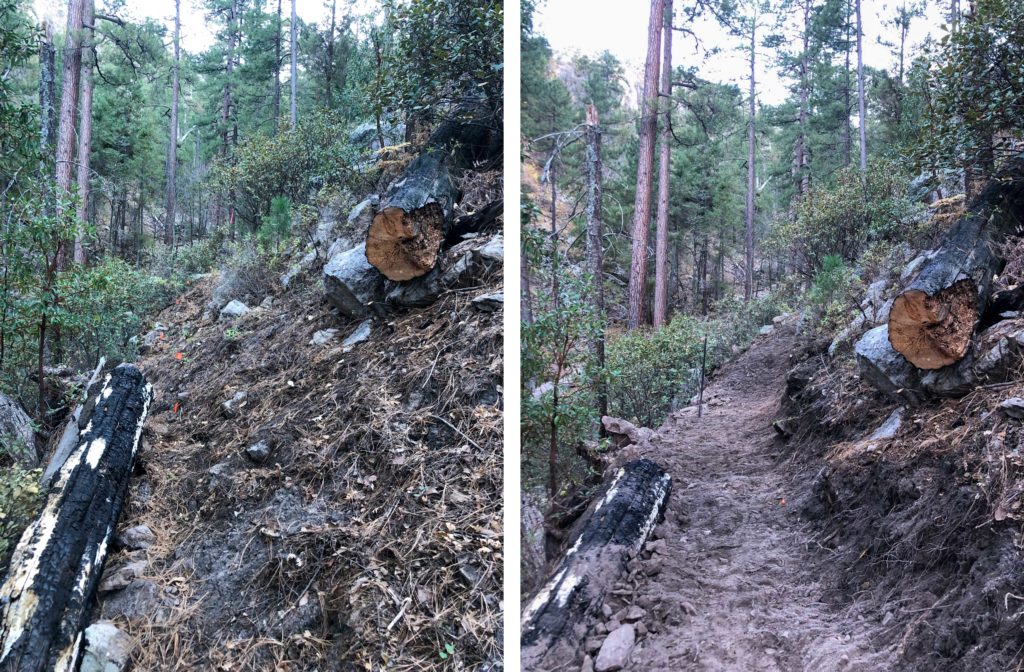
Over the eight days, we spent lots of energy, burned many calories, and ate lots of food. Too much, even. Something about this hitch made us hungry, and the whole lot of us ate just about every crumb we brought into those woods, even if it tasted burnt. It’s why we were all eager to get to the Portal Cafe, where we stuffed our bellies with fresh hot foods before parting ways, until our next hitch when we return to finish what we started.
